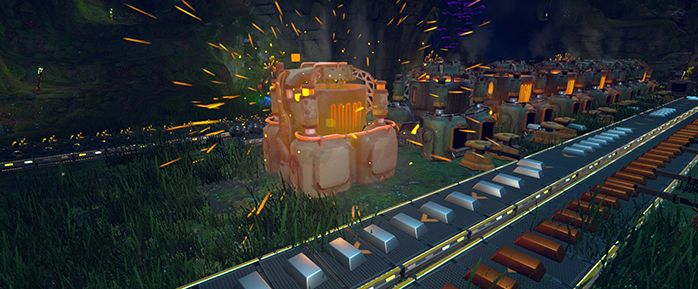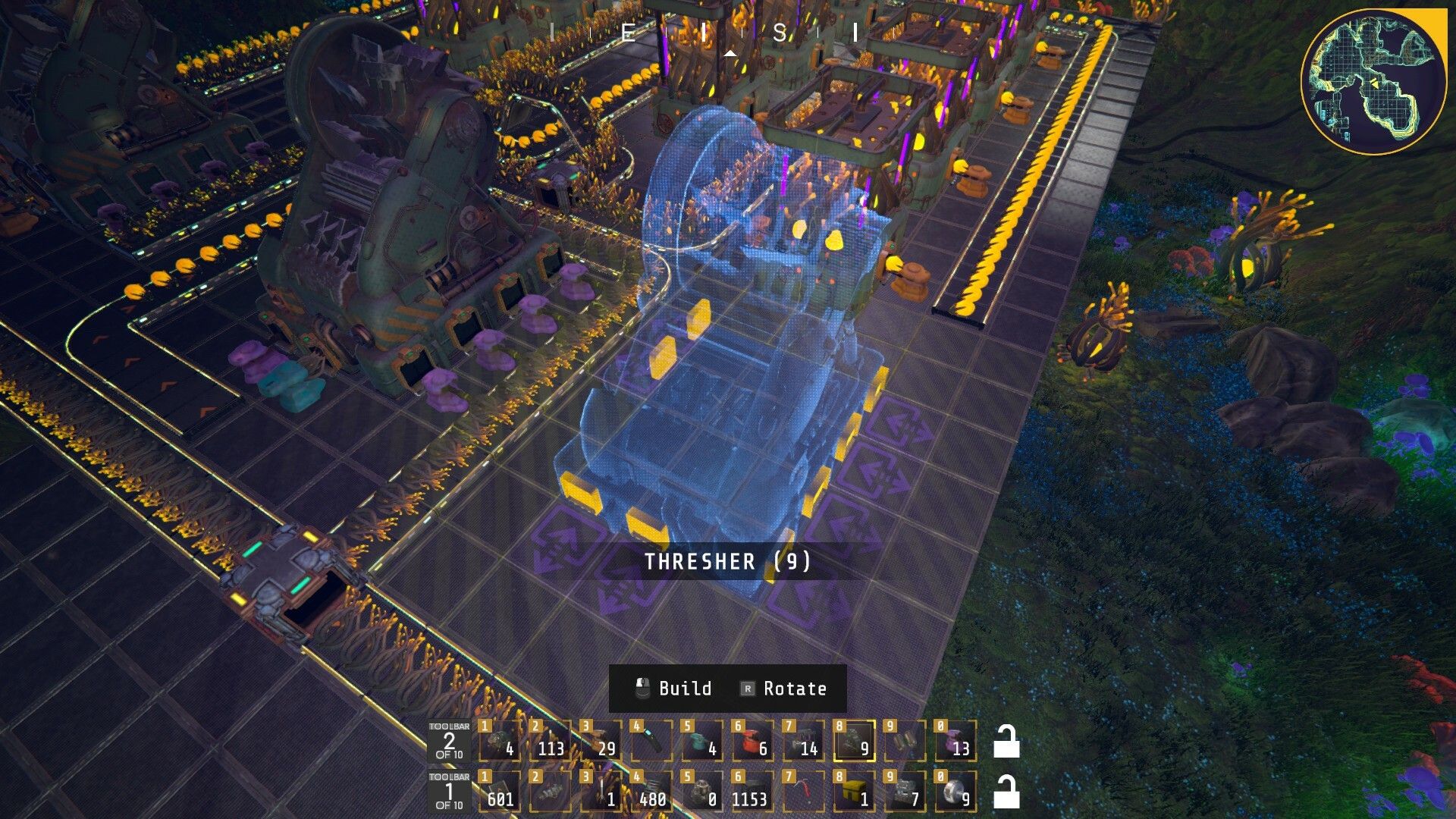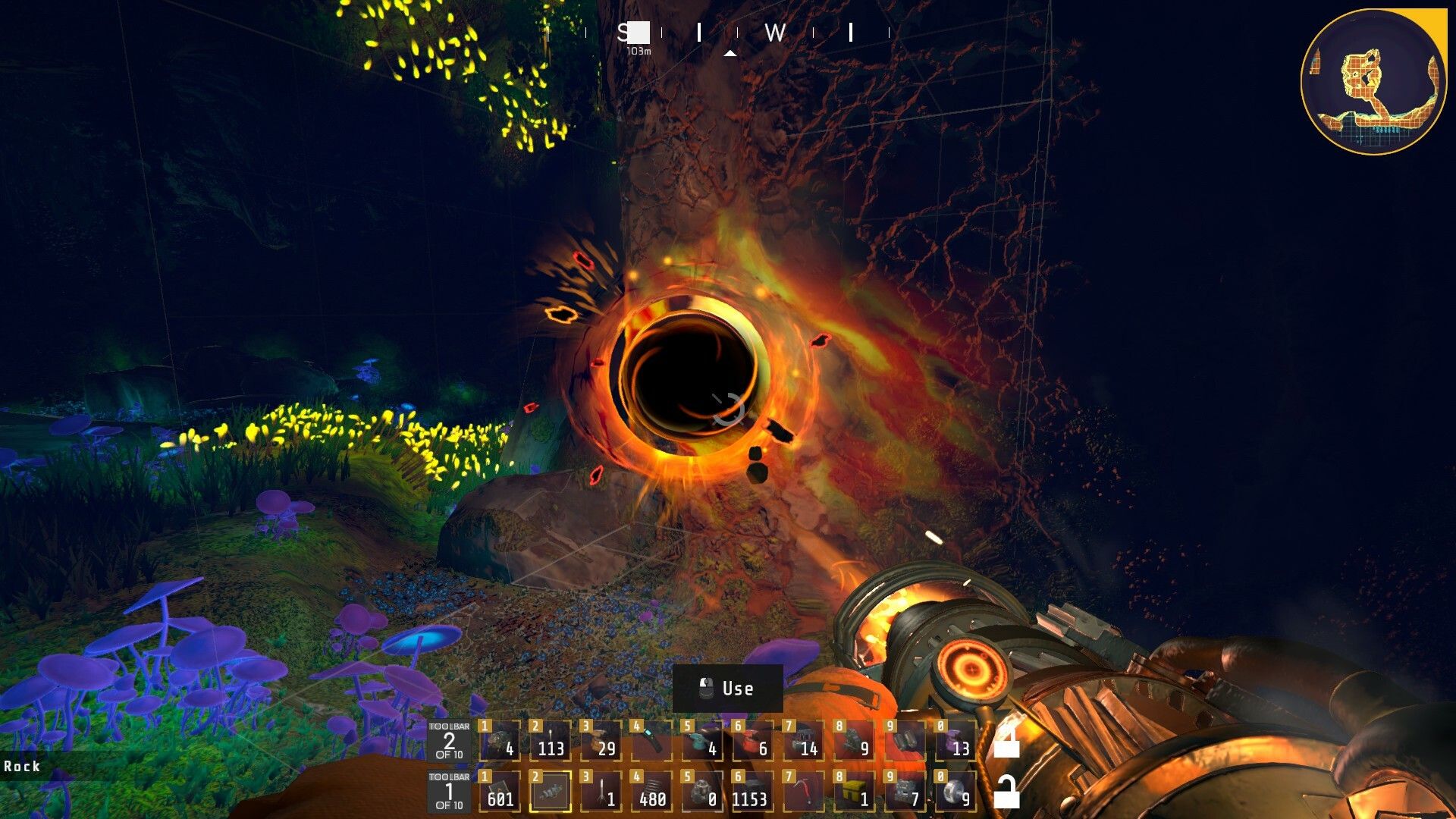One of the defining traits of humanity is that we're tool-using monkeys. Sure, lots of creatures like crows use tools, but humans excel at it to the point that we make tools that use tools to create more tools. If there's a job that can be automated, someone will figure out how to automate it. That's not so great for anything that requires the creative touch, of course, but when all you want is an identical copy of something that already exists, automation is an incredible shortcut that can scale up to a ridiculous degree. The downside is that this usually consumes vast amounts of unspoiled nature, both in terms of yanking the resources out of the ground and also needing a place for all that machinery to be, but when the result is hundreds of machines connected by thousands of conveyor belts creating uncountable products, it can all feel worth it somehow. There have been no shortage of factory games in the last few years, from Satisfactory to Learning Machine, Autonauts to Foundry, and the latest to join their ranks will be the first-person subterranean narrative automation adventure Techtonica, whose demo was recently released.
You wake up with no memory deep beneath the surface of an alien world, everyone dead and your only companion being the voice from a glowing yellow Spectral Cube that's as mystified at the colony failure as you are. The amnesia is a dead giveaway that either you or the helper-voice Sparks (or both) were instrumental to the outpost's destruction, but ignoring the likely traditional arc of the amnesia narrative for the moment, there's a lot of building required to escape from the caverns. The various terminals needed to open up the path back to the surface are all in need of repair, and fixing them requires a huge amount of resources.
The basic mechanics of Techtonica will be familiar to anyone who's played a factory game: harvest plants for the earliest type of fuel, set up drillers to mine ore, send ore to smelters on a pathway of conveyor belts, etc. Ingots can be refined to basic parts, parts combine in assemblers to create more parts or other structures, and with just a little bit of practical logistics each new production line will make it easier to create the next one. What sets Techtonica apart from Satisfactory is that it's also an adventure, complete with a story and its own unique way of working up the tech tree.
While there is a tech tree, opening up the branches requires exploring the map and scanning broken-down machinery. Once you've found a new device it still needs to be paid for with computational power, which is supplied by the CPU cores you set up. The demo for Techtonica has a couple of items in its standard progression that require finding and scanning multiple units to learn, encouraging full exploration of the early part of the map. Once the main story section of the demo is over, it turns into a sandbox in a large series of caverns, with the tech there requiring only a single scan to activate, but that's more about giving the player quick access to the toys than an indication of how those will be found in the full game.
Another feature that can't be underestimated in giving Techtonica its own identity is the map, which is fully hand-crafted and designed with exploration in all three dimensions. The game takes place underground and that's going to make for different conveyor belt setups than a game like Satisfactory, because it's possible for a vein of ore to be high up a wall or buried deep in the earth. The terrain is also fully destructible, and while initially the standard pickaxe knocks out a chunk at a time, the MOLE drilling unit generates a mini black hole that clears a 5x5x5 cube of dirt, which is a big help in making uniformly-sized tunnels and clearing off flat chunks of the landscape. I found myself being careful of where I was using the MOLE, though, because the underground is a beautiful place thanks to bioluminescent plant life everywhere, not to mention the occasional river flowing through the caverns. It's going to be machines everywhere eventually but until then it can also be pretty.
While the demo for Techtonica is early and only touches on the basics, even in its endgame sandbox mode, you can already build decent factories and get a sense of the possibilities ahead. The story is planned to be a major part of the game, driving the goals for factory creation, which includes plans to have up-to-four-player co-op available. While there's no release date or even release window for the Early Access of Techtonica, the demo is a great promise of the automation to come, deep in the heart of a lonely planet where whatever disaster may have struck can only be overcome by large-scale production efficiency.
https://www.anrdoezrs.net/links/3607085/type/dlg/sid/UUhgUeUpU8984/https://www.youtube.com/watch?v=3lJPnlF6rio



